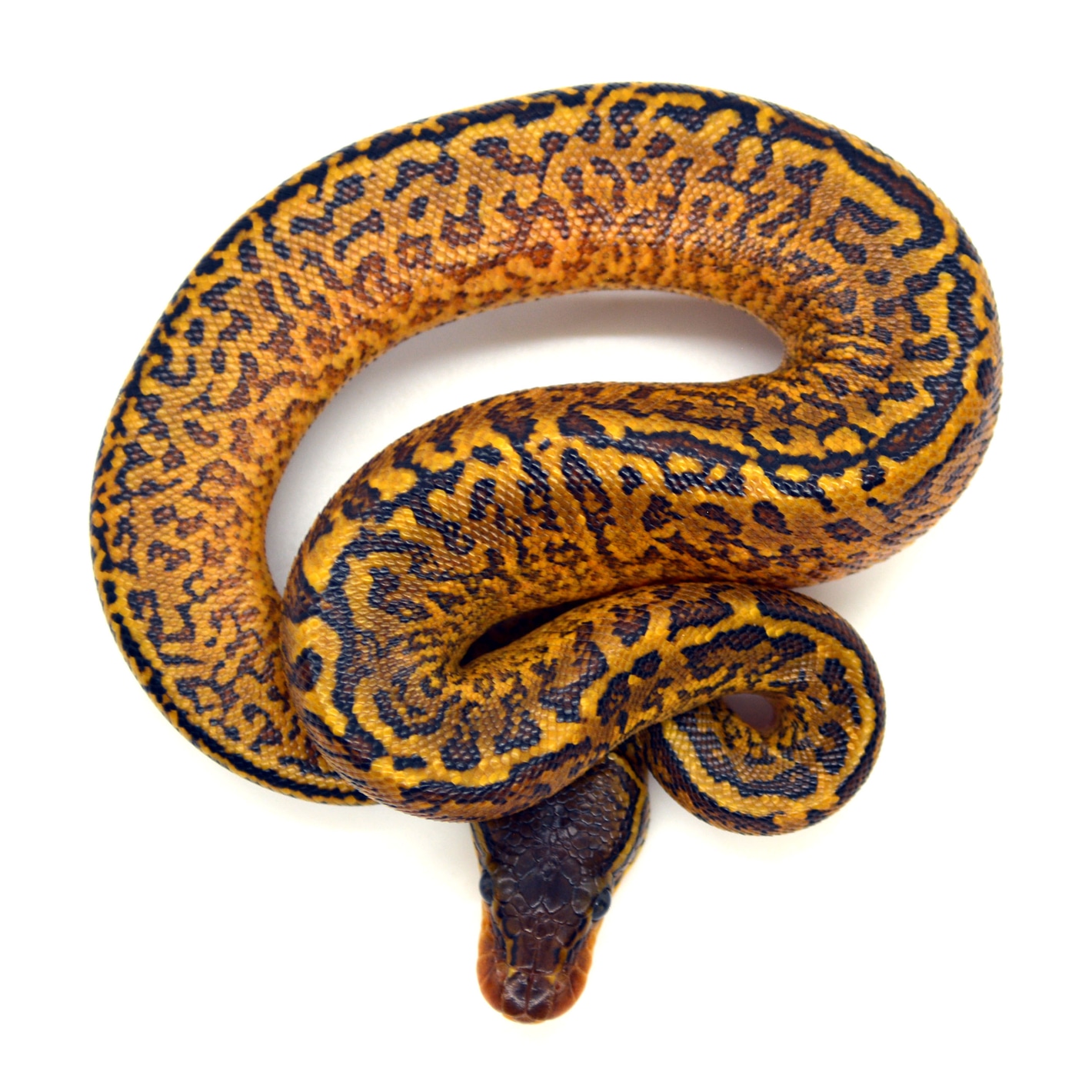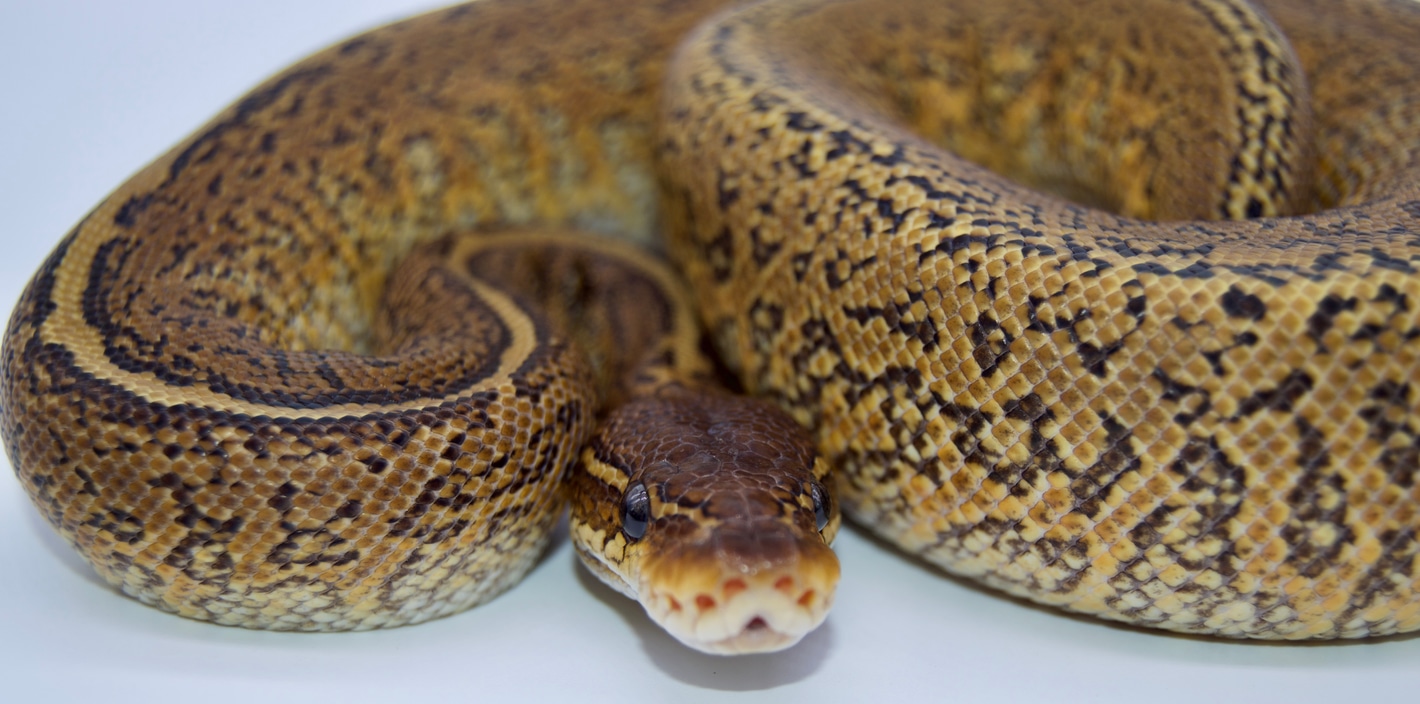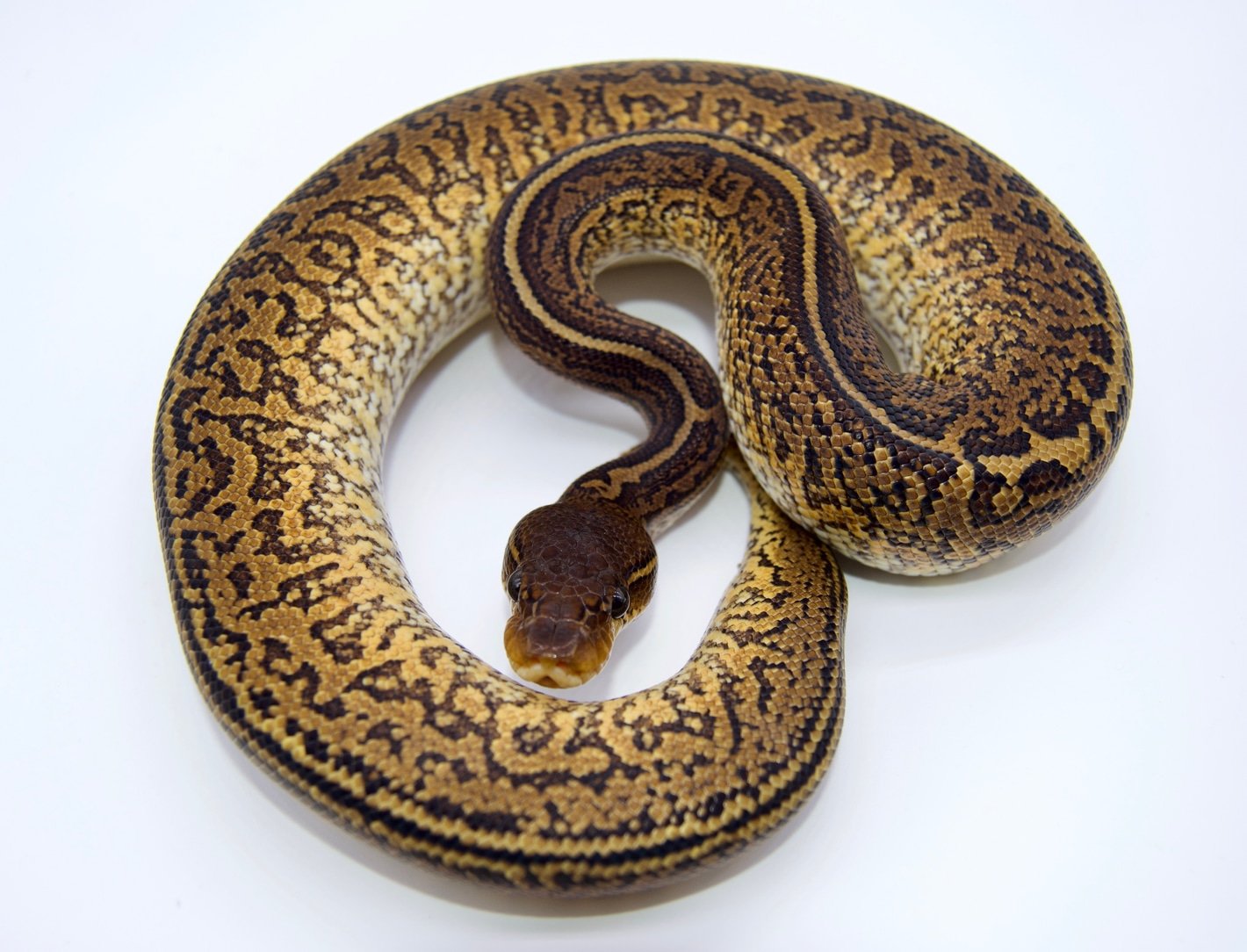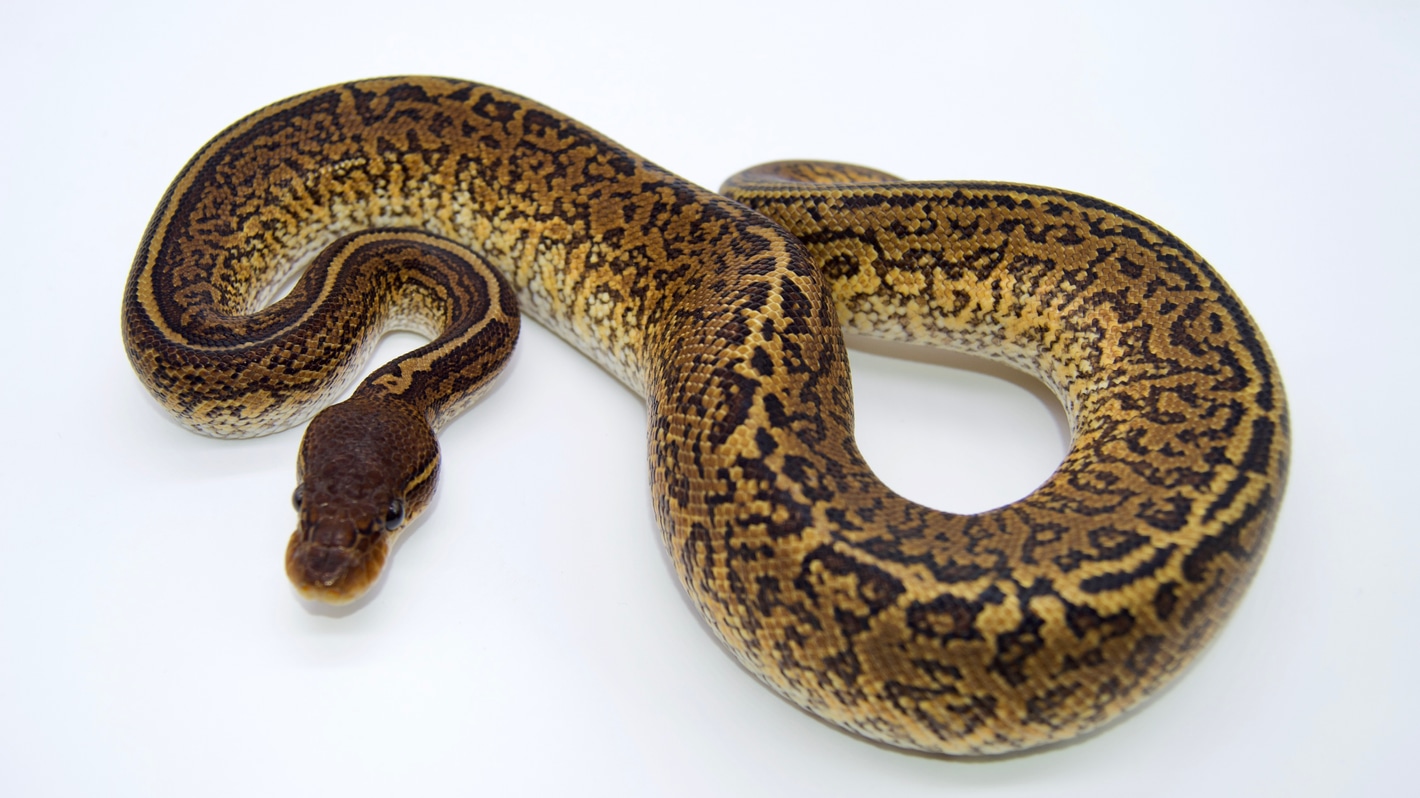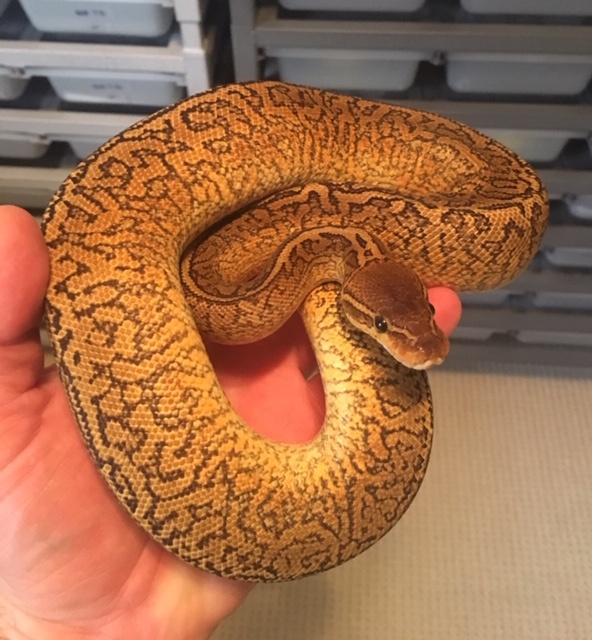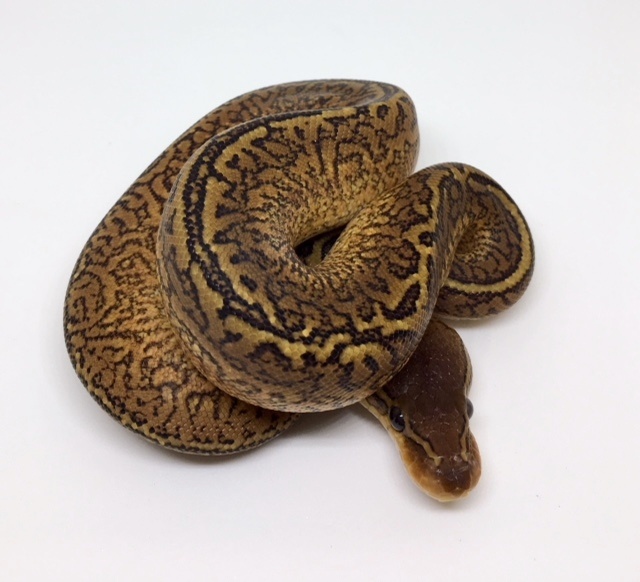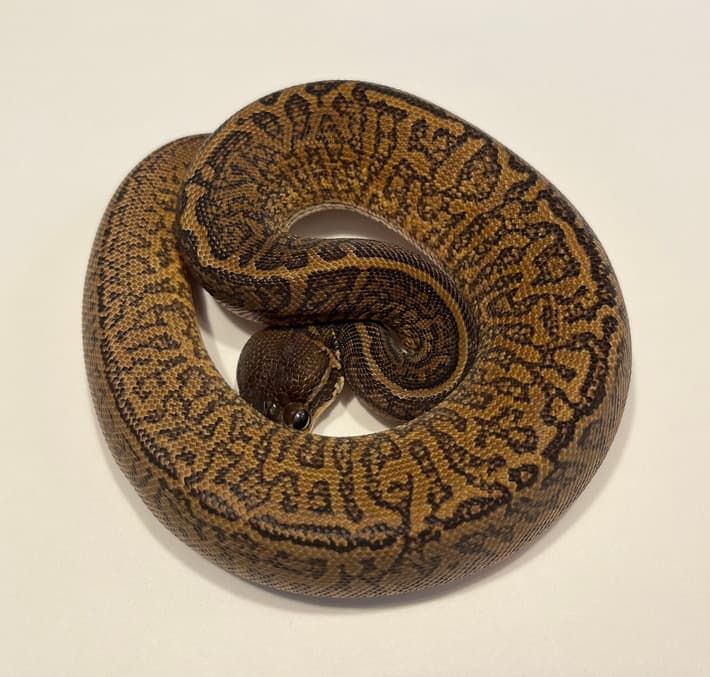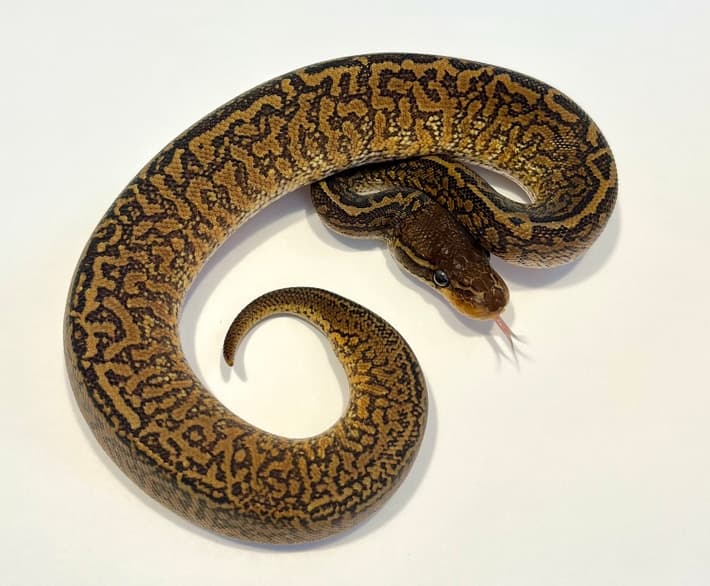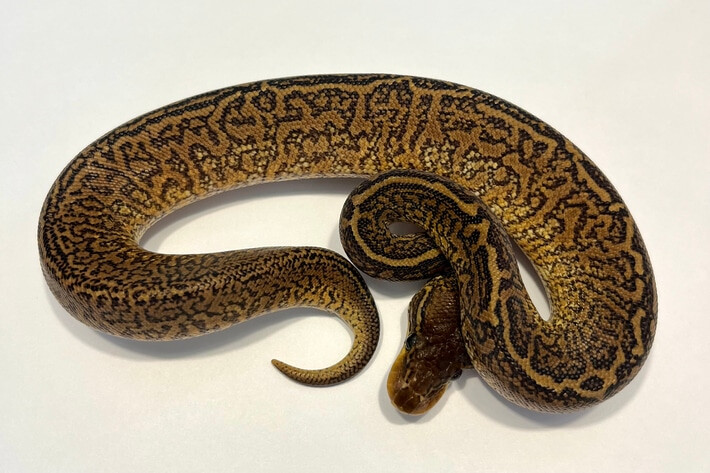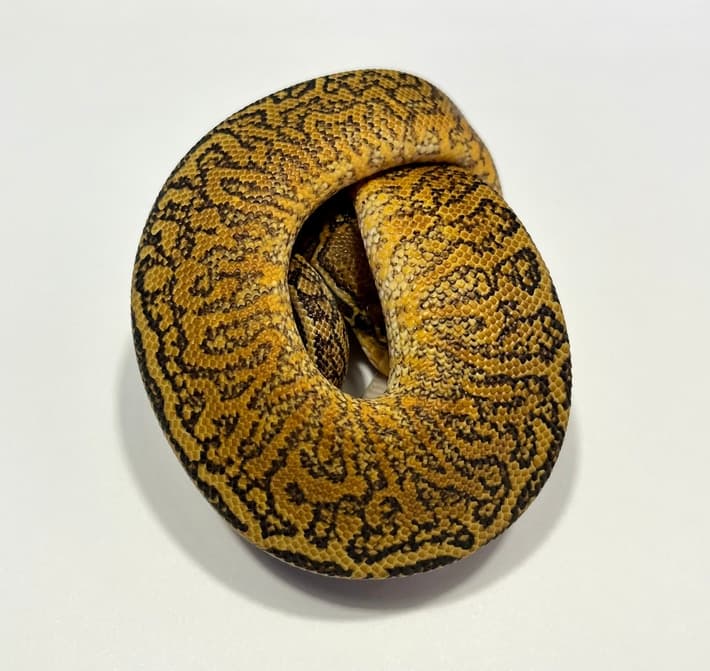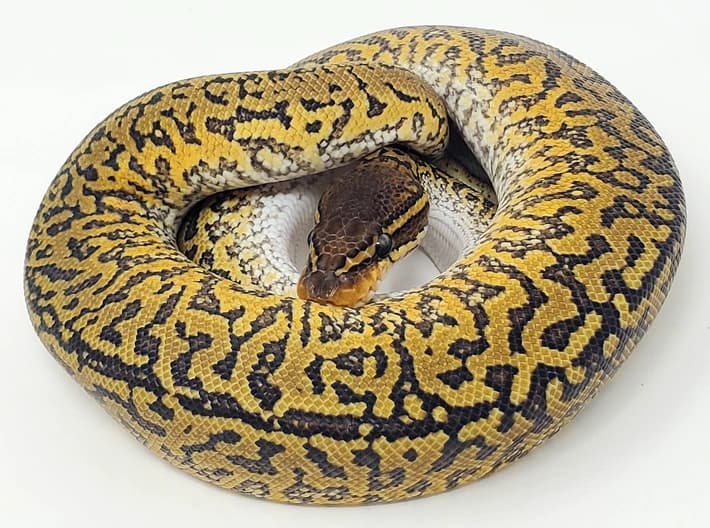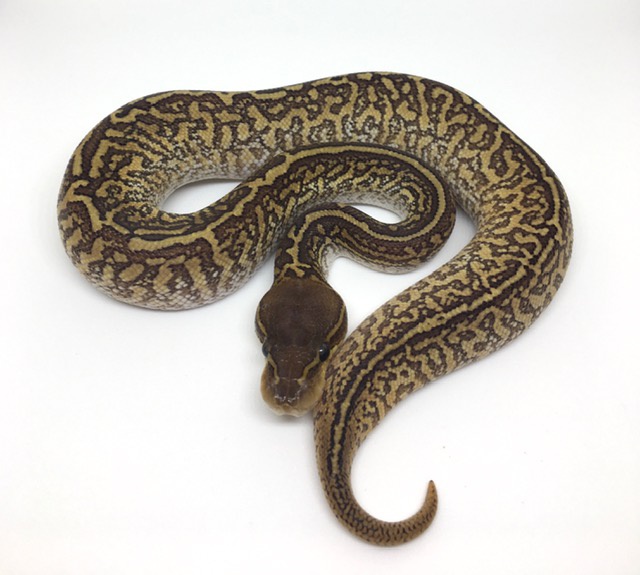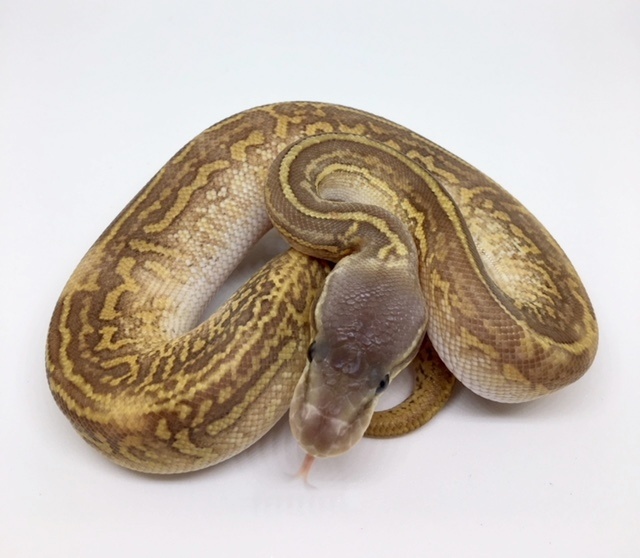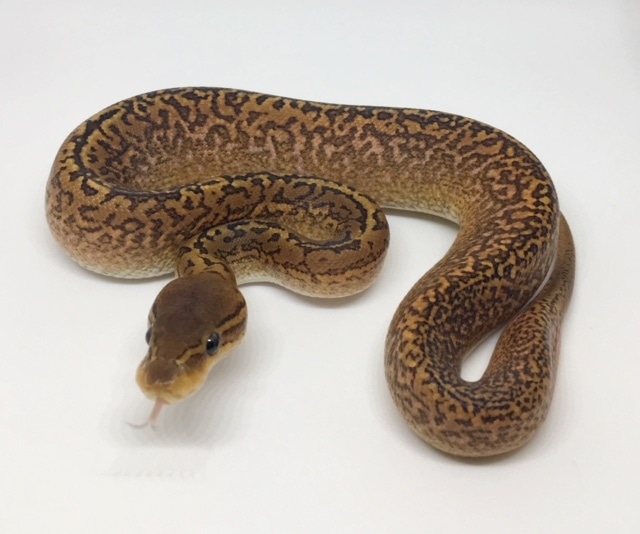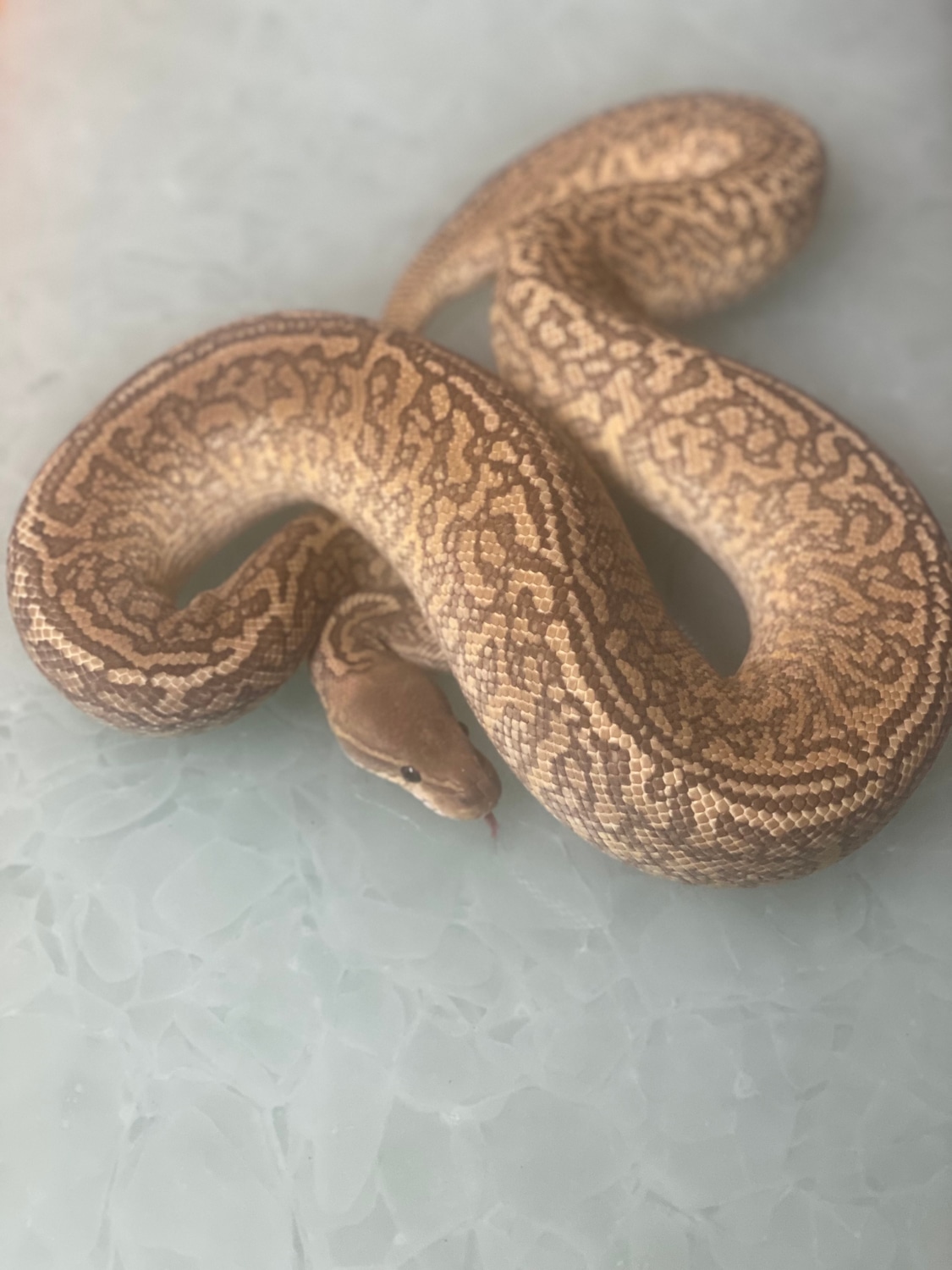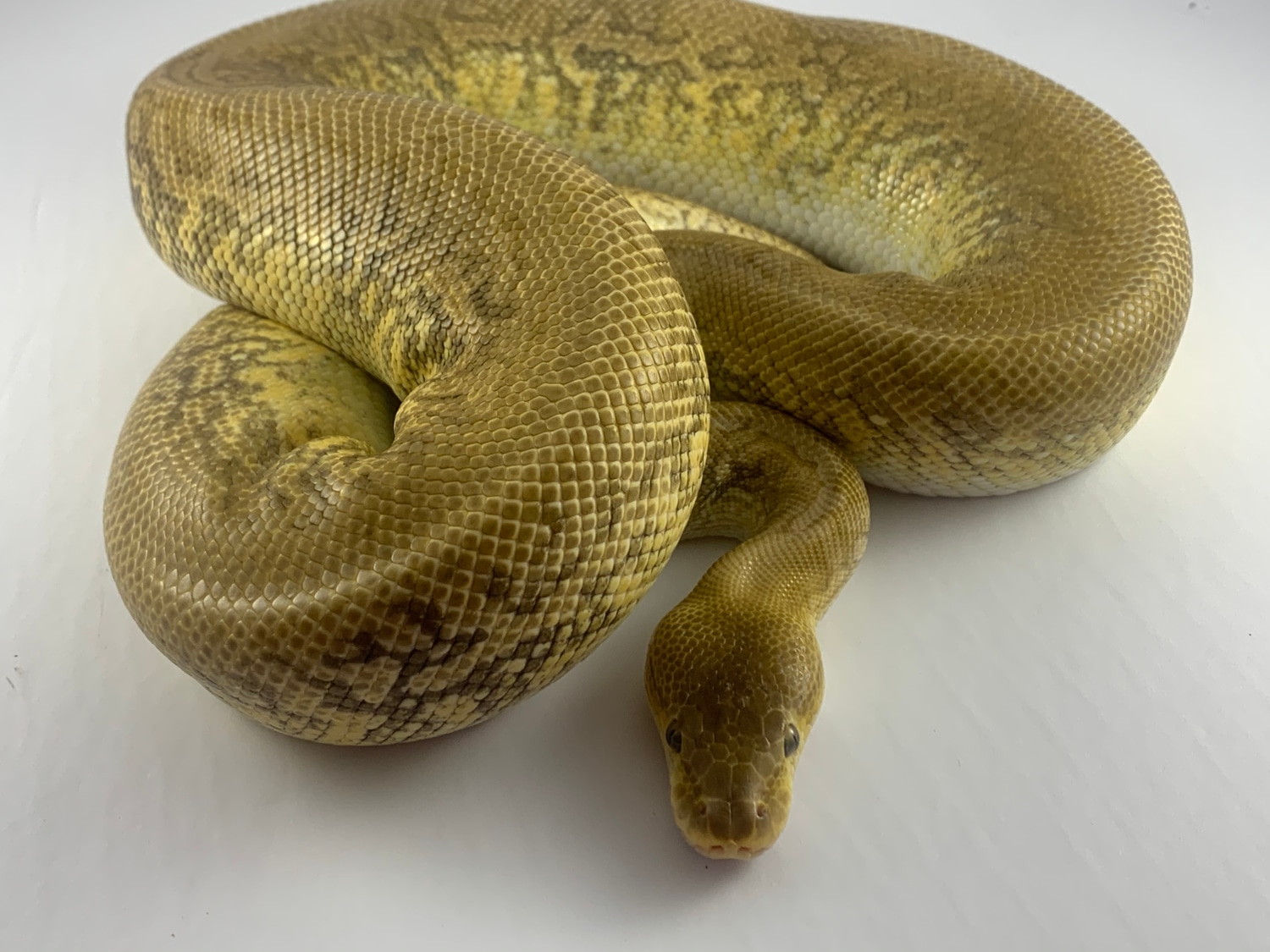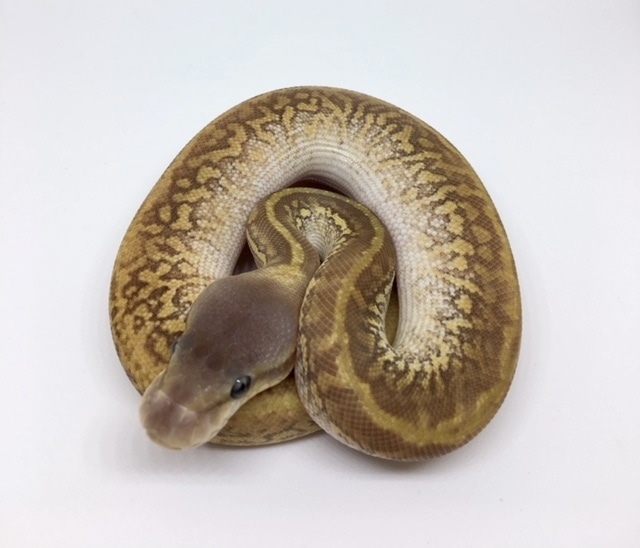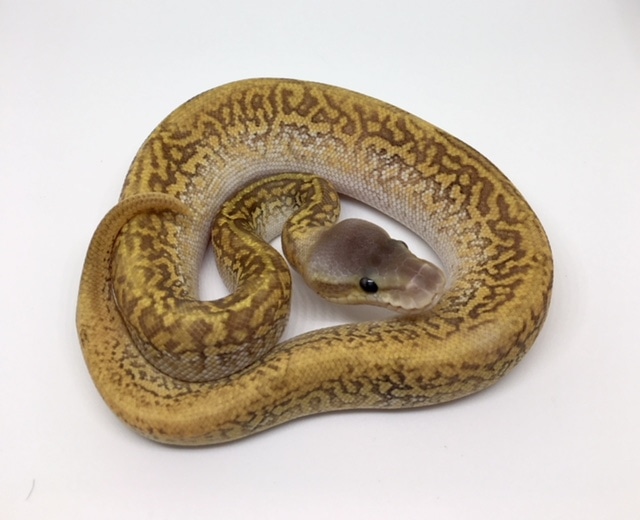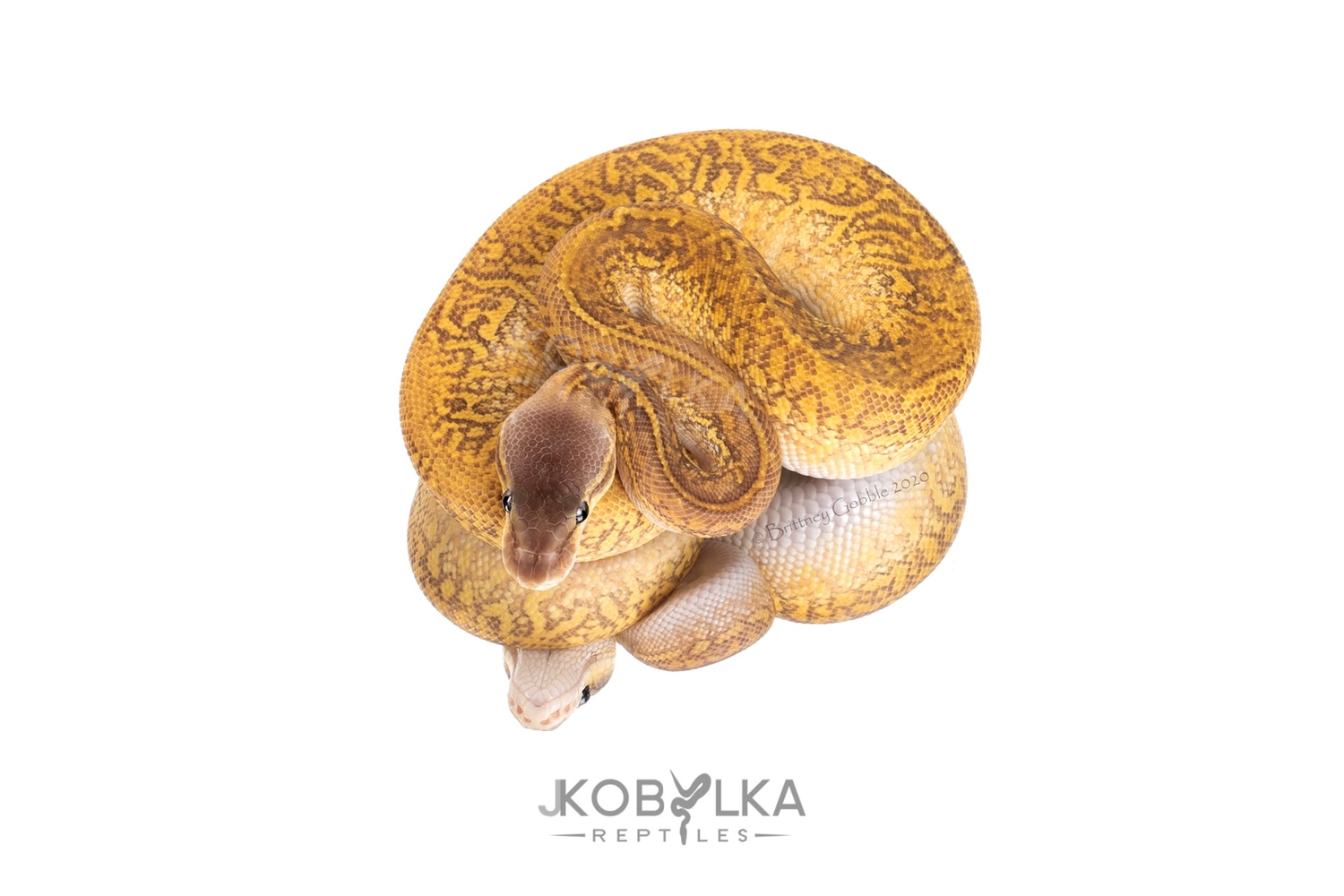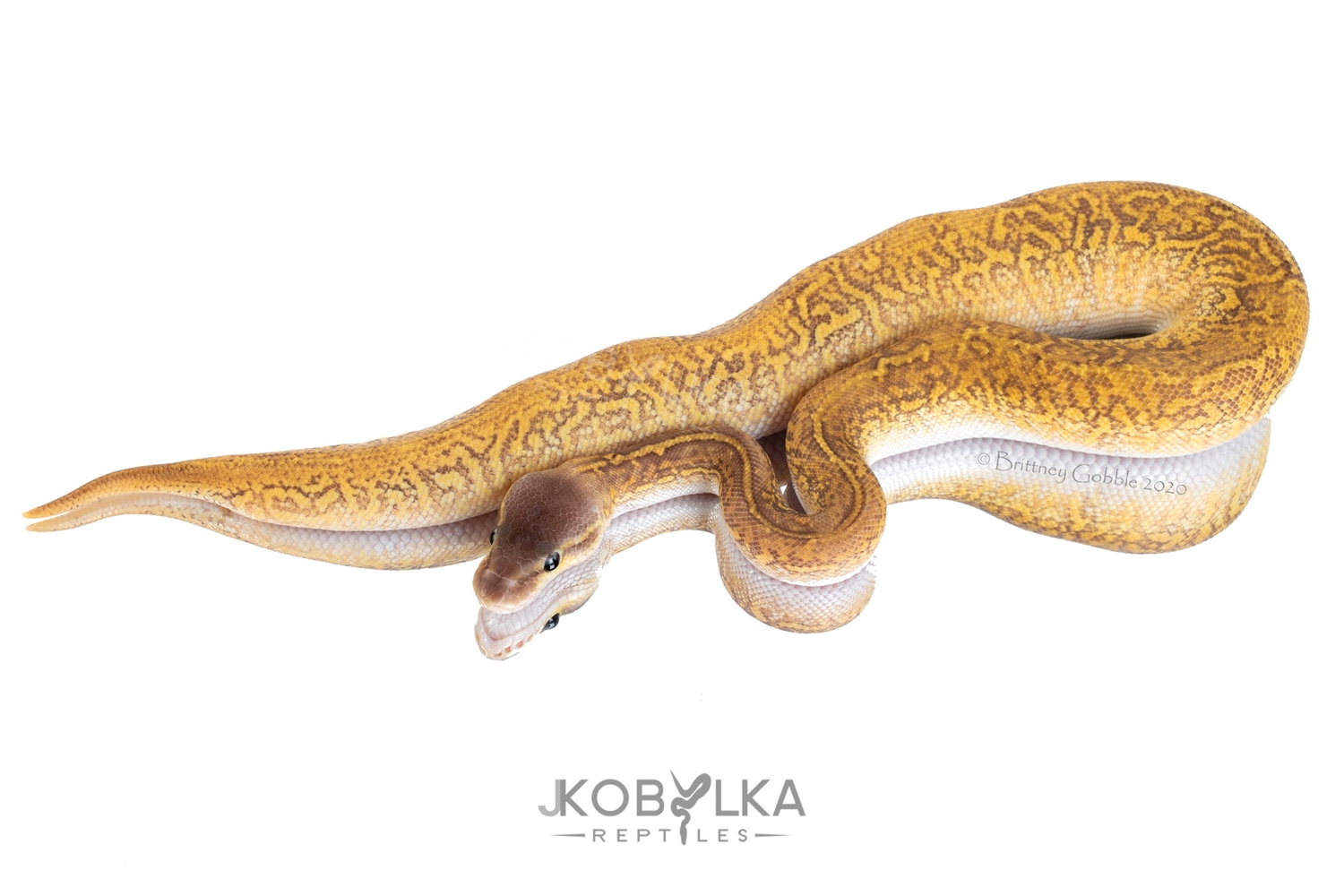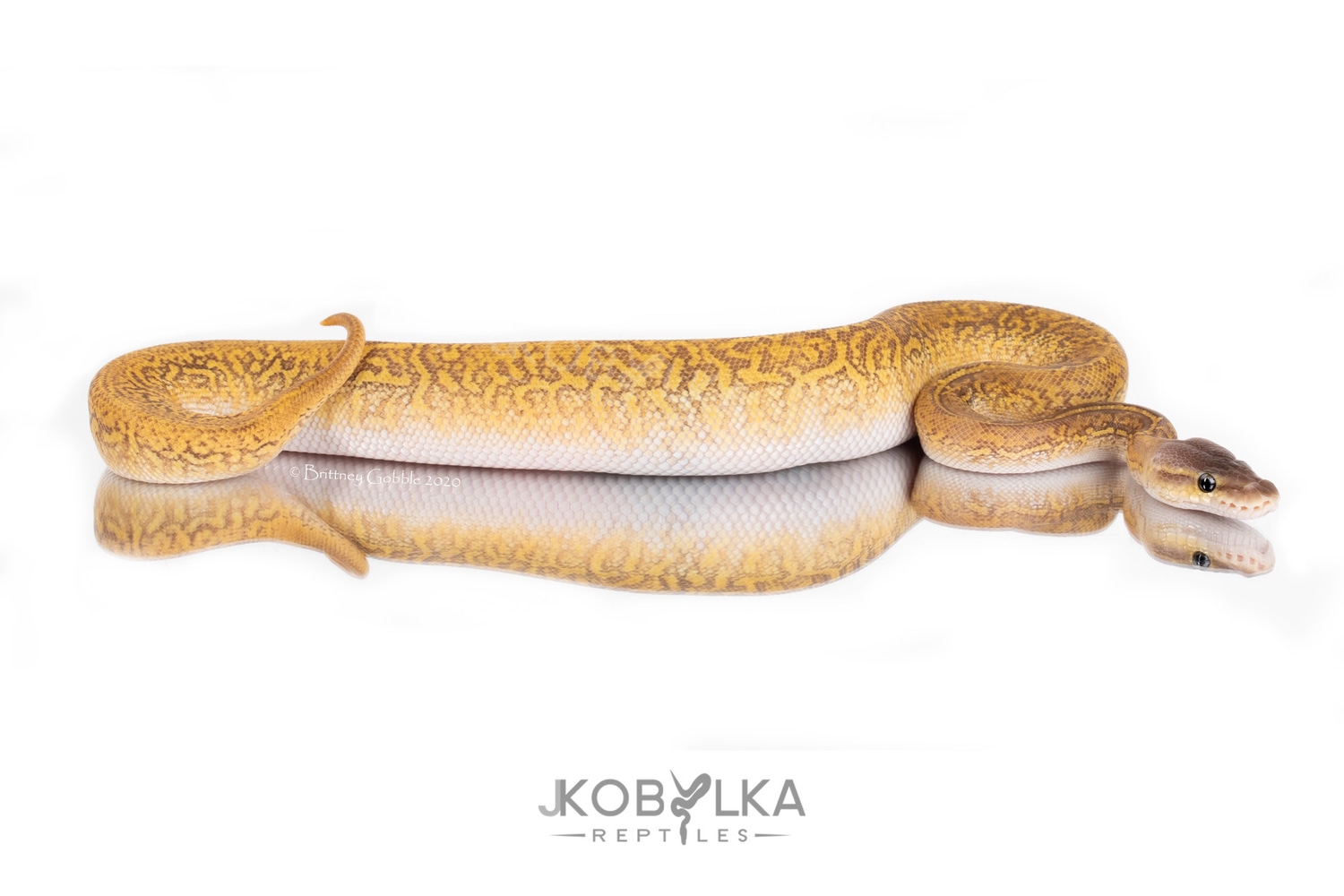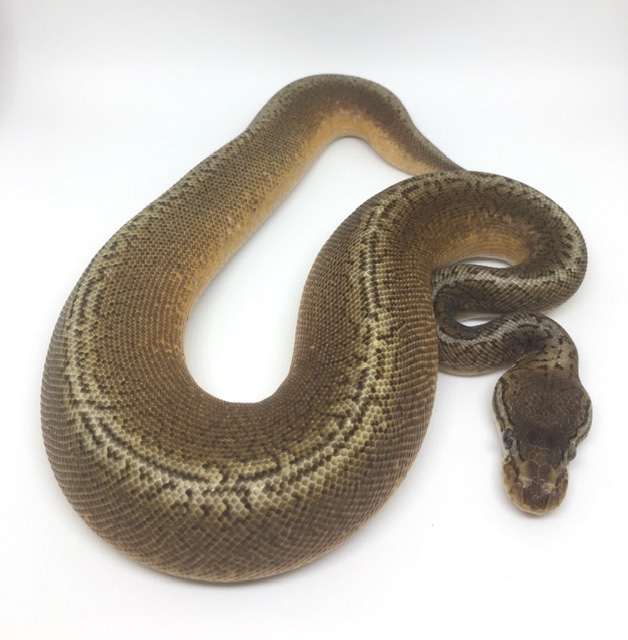Monsoon
Type: Recessive
First Produced By: Dave Green
Aliases: Moray, Super Fractal
First Produced In: 2013
Availability: Common
Last Updated: 2024-09-01
Do you have any suggestions or corrections for this article?
Click here to contribute feedback
About
Upon discovering the Monsoon morph in his breeding program, Dave Green initially referred to it as the “King of Dinkers” due to its striking and unusual pattern. However, in 2015, he was able to prove that the Monsoon trait was recessive and required a proper name. This realization prompted Green to give the morph the official name of “Monsoon,” which is now one of the most widely recognized traits in the Ball Python community.
History
In 2013, reptile breeder Dave Green made a seemingly straightforward pairing between a Pastel Special and a Super Mojave in order to create the coveted Crystal combo. However, when the clutch hatched, Green immediately noticed that one of the offspring had a distinctive and unprecedented pattern. This pattern stood out as being unlike anything he had encountered before, piquing his curiosity and setting him on a path towards discovering a new and exciting morph.
In May 2022 Justin Kobylka of Kinova released a Youtube video that documented his progress in proving Monsoon and Moray to be the same.
Appearance
Head
The head of the Monsoon Ball Python is a light tanned color with very little, if any, head stamp.
Body
The Monsoon Ball Python is a striking morph with a unique pattern that dominates its body. The pattern is highly intricate and appears to shatter the distinctive “alien head” markings that are typically seen on ball pythons. Instead, the Monsoon pattern resembles a labyrinth, with a thin and separated dorsal stripe that is broken in places. Overall, the Monsoon Ball Python is a fascinating example of the incredible variety of patterns and colors that can be found in reptiles.
Tail
The tail of the Monsoon Ball Python usually expresses the same patterning as the rest of the body.
Proven Lines
- First Produced By: IRES Reptiles (23671)
- First Produced In: 2017
History
IRES Reptiles: "After finding the Stranger gene you think something similar could never happen again. Well, we were wrong. In September 2017 something similar happened again. Totally unexpected we found a gene which looked a lot like the Monsoon gene. But before rushing into things let’s start at the beginning.
Back in 2014 while we were working on several Clown projects we hatched 2 Fire females which could possibly carry the Clown gene ( 50% hets ). As possible is “nothing” we could sell them as Fire females but these females looked a bit different from the Fire look we were used to. Not having much experience with Clown back then, our first explanation was that it must be het Clowns. So we decided not to sell them but to keep them for future breeding and prove them out.
In season 2017 both females were breedable and we bred them. When making the breeding plans, it turned out that both girls were going to be bred to related males. One was 25% related and the other 50% related. We decided to do this as other unrelated males were already assigned to different breeding groups and we would not like to change that. This was more of a side project to prove the girls to be het for Clown. We bred them as planned and all went well, both girls gave us eggs, one week from each other.
At the 9th of September 2017 we cut the first egg of a 6 egg clutch, really excited to find Clown offspring… but this excitement went to flabbergasted in a split second. What is this? Hold on, let me check again, was this for real!? Yes it was! …… We saw a baby ball python with a look we never saw before. It took some time to let this sink in and with shaking hands we continued to cut the other eggs. In this clutch we found Clown combos but also combos which clearly seems to have a related gene, which we never saw before. We cut this clutch at day 53 so it was still a week before they would come out of the egg. This was going to be a long wait.
At the 17th of September 2017 the first one came out and we were really flabbergasted. It looked like we hit some kind of “Monsoon type” Clown combo. Immediately posted it on Facebook and it got so much attention it was crazy. We even had contact with Dave Green, the founder of the Monsoon gene, that evening as lots of people thought we hit a Monsoon Clown. When talking to Dave about how we found this snake, what the pairing was and where the parents came from and even deeper where our collection came from, we could not find a relation between his collection and ours. So whatever the future would bring we could never call this gene Monsoon, so for the moment we called it “Monsoon type”. But we are rushing things again, back to the other clutch.
The good thing was, 1 day earlier there was the other clutch waiting to be cut. When we cut this 6 eggs clutch we also found 3 snakes which are clearly carrying the same gene as we saw in the other clutch. So at this point , looking at the relation between the pairings and the snakes, the gene we are looking at has to be recessive.
In season 2018 we did similar pairings. Both Fire females were bred to one of the males which started this project. This time we hit 1 “Monsoon type” ball python in each clutch. Less lucky then the year before but still very good from pairing het x het. At this point we own 8 visible “Monsoon type” snakes, 4 proven hets and even more 66% hets which we need to prove later on.
Our goal for season 2019 is to try to isolate the gene and find out which genes are in the snakes we own. All 8 “Monsoon types” are combos and from most of them we are not 100% sure what is in them. We have a good idea about it, but the gene changes the overall looks so dramatically, that it is hard to recognize all genes in them. We have to breed the males to Normals to let the genes fall apart and see what is in them. It’s a nice learning experience. Hopefully we are also be able to isolate the gene. Would be nice to see what the single gene looks like.
Season 2019 is getting closer and we think it is time the “Monsoon type” gene gets its own name so as of today the gene will be called, the Moray gene.
This does not say it’s a different gene than the Monsoon gene, but with all information we have today we just have to handle it as a different gene. In the future we will try to find out if it’s compatible."
In May 2022 Justin Kobylka of Kinova released a Youtube video that documented his progress in proving Monsoon and Moray to be the same.
Related Traits
Fractal:
@prodigiouspythons: "Long story short Fractal = Het Monsoon. There’s whole lot of drama surrounding it but basically Monsoon has been proven to be inc-dom in my findings with my collection and Billy’s collection. The Leopard Monsoon that Billy hatched out was found using these ‘Fractal’ characteristics. The male that makes these ‘Fractal’ animals is the brother to the male that sired the Leopard Monsoon last year. I started hatching Fractals out in 2018 and this year I might have a shot at ‘Supers’ if my females decide to go.
I call it Fractal because I can see the effect in the Het form and thats what I labeled it as. At the time I didn’t have confirmation it was Monsoon until the Leopard Monsoon hatched out. (Nobody but Billy and a handful of people believed me and even now people are still skeptical so yeah) I even have Fractals that paradox and show the ‘Super’ through the paradoxing. (Calico Leopard Fractal I have listed on MM for example albeit the photos make it hard to see)
You can go on MorphMarket and look at all listings of all the 100% Het Monsoons listed over the years and you should be able to see what I am seeing. (I hope anyway) The ‘Fractal’ manifests similar to yellow belly in that there are varying degrees of intensity but if you know what you are looking for, even the normal looking ones can be picked out.
https://imgur.com/a/HgU07sh - an old gallery of stuff I made in 2019.
https://www.youtube.com/watch?v=j0oo0ncPZXg - Vid Royal Canadian Reptiles made about it (Shout outs to Will)
https://www.youtube.com/watch?v=feLXCr59Wak - Long video by Mutation Creation where he explains the origins of how the gene ended up in his collection (and its connection to the Tom Baker Line of Special)
I am the only one who is claiming Monsoon to be Inc-dom so take that with a grain of salt if you want but I know what Im seeing and it has been proved out albeit in not my collection. Like I mentioned prior, you can go through all the 100% Het Monsoon’s on MorphMarket, facebook, etc. and you can see what I’m seeing.
Im sure theres some points I’ve missed but if I can solve the ‘puzzle’ (no pun intended) I assume others can as well. A hint that would help would be to compare the Special Het Monsoons on MorphMarket to non-het versions of the same combo and you can see the huge night and day difference."
